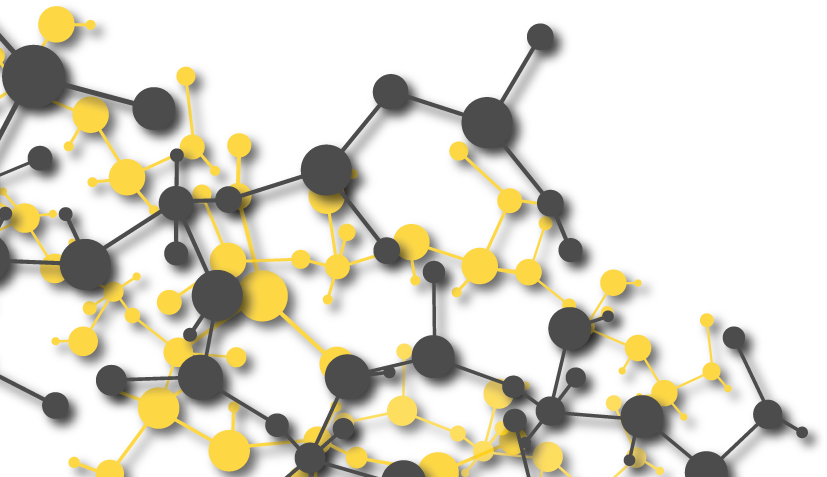Allyl alcohol (AAL) is a readily available, water-soluble liquid used as a comonomer and a chemical intermediate. As a dual-functional monomeric building block, AAL consists of a polymerizable allylic moiety and a reactive hydroxyl moiety. For the purpose of this discussion, we will show the versatility of allyl alcohol as a functional monomer.

Reactions such as esterification of the hydroxy functionality on AAL can be carried out before or after polymerization of the allylic moiety. The AAL double-bond is quite unreactive in free radical polymerizations compared to other vinyl monomers like styrene, vinyl acetate, or acrylic monomers. With free-radical initiators, AAL affords relatively low molecular weight copolymers with low monomer conversions. We can attribute this fact to AAL having both low reactivity vinyl functionality and acting as a chain-transfer agent, terminating growing free-radical chains.
To copolymerize AAL, special polymerization techniques must be used. With di-t-butyl peroxide or t-butyl hydroperoxide, temperatures up to 180 °C in pressurized reactors are used to produce styrene-allyl alcohol (SAA) copolymers. The feed of the more reactive styrene monomer and the initiator are programmed gradually to affect a more uniform comonomer distribution in the copolymers having sufficient AAL incorporation and hydroxy functionality.
Free radical polymerization conversions are generally kept in the range of about 40 percent or lower to avoid depletion of the more reactive styrene comonomer and to maintain mild reaction conditions that afford stable, low color products. Even with this, some destruction of the hydroxyl functionality occurs. US Patent 2,940,946 describes technology for the controlled production of poly (styrene-co-allyl alcohol). With other monomers like acrylic esters, producers also use special techniques, including a gradual initiator feed and staged additions of the more reactive acrylic comonomers (please refer to US Patent 6,294,607).
The primary polymer applications for allyl alcohol (AAL) are in thermoplastic styrene-allyl alcohol (SAA) and acrylic-allyl alcohol copolymers, thermosetting diallyl phthalate (DAP) resins, thermosetting allyl carbonate resins used in eyeglass lenses and optical plastics, allyl ester resins with dibasic acids, intermediate for silane-coupling agents, and in allyl acrylate/methacrylate monomers. As a chemical intermediate, AAL is primary used is in the production of over 1,000,000 MT of butanediol (BDO) and 150,000 MT of 2-methyl-1,3-propanediol (MPO) via hydrocarbonylation technology.
Allyl alcohol has a pungent odor described as mustard-like. AAL is toxic by inhalation and ingestion. It also requires greater attention when handling. The NFPA hazard ratings for allyl alcohol are: Health 4 (severe), Flammability 3 (serious), and Reactivity 1(Slight). The b.p. of AAL is 97 °C (207 °F) and the flash point is 21 °C (70 °F). We ship allyl alcohol in special SS tank trucks or in cylinders.
The annual global consumption of allyl alcohol is approaching 1,000,000 MT and is estimated to grow at about 1.6% annually over the next five years. Butanediol production represents well over one-half of the consumption of AAL as an intermediate. AAL volume growth will continue to be driven by expansions in the BDO industry, and BDO end-use derivatives like PBT resin and PTMEG polyols.
Polymer Applications
Processors use thermoplastic copolymers of allyl alcohol with styrene (SAAs) and acrylates in inks, toners, and coatings as a source of hydroxyl functionality for crosslinking and as a resin modifier. Thermosetting allylic resins based on allyl alcohol include diallyl phthalate and allyl diglycol carbonate (ADGC). Other commercial polymeric uses for allyl alcohol are as a component of reactive monomers such as allyl (meth)acrylate, allyl glycidyl ether (AGE), a reactive diluent, and in the production of certain silane-coupling agents such as 3-methacryloxypropyl trimethoxy silane (A-174) and 3-glycidoxypropyltrimethoxysilane (A-187).
Thermoplastics
Styrene-Allyl Alcohol Copolymers
Commercially-available styrene-allyl alcohol copolymers are low molecular weight polymer modifiers with a high primary reactive hydroxyl content. Molecular weights (Mw) are of the order of 2000-3000, and hydroxy content can average about 15-20 units of allyl alcohol per polymer chain (30-40 % AAL in the copolymer). SAAs are hard resins with softening points of about 90-110 °C. These high-hydroxy functionality “polyols” enhance properties such as adhesion and crosslink density. SAAs also contribute hardness, durability, water-resistance and corrosion protection.
As a component of polyester coating formulations, we see SAAs used in appliance finishes, coil coatings, and baking enamels. The transportation and general metals industries use primers based on SAA. Alkyd formulations esterified with SAA “polyols” are used in printing inks, overprint varnishes, and maintenance paints. Processors produce aqueous ink-grinding resins by esterification of maleic anhydride fortified rosin with SAA polyols. Powder coating formulations take advantage of the hard properties and crosslink density potential of the SAAs with isocyanates or melamine. Other classes of polymers that see use with SAA “polyols” include polyurethanes, acrylics and radiation-cured coatings.
Acrylic-Allyl Alcohol Copolymers
Newly-developed acrylic polyols, based on copolymers of AAL and (meth)acrylate monomers and styrene, have significantly lower viscosities with high hydroxyl functionality. Molecular weights are in the range of 3-6000. These liquid and solid acrylic polyols achieve solids levels of > 65 % in urethane-acrylic and melamine-acrylic solvent-borne coating formulations. Here again, processors produce the acrylic-AAL copolymers by a programmed, gradual feed of the more reactive monomers and the initiator to the allyl alcohol in a bulk free-radical copolymerization process at about 140 °C.
Applications include 2K clear over-coats and pigmented base coats in transportation, maintenance, and general metals coating applications. The high hydroxyl functionality contributes to good chemical and abrasion resistance in the final coating.
Thermosets
Diallyl ester resins exhibit good cure characteristics when initiated with peroxide catalysts and afford hard materials with excellent physical properties.
Diallyl Phthalate Resins
Diallyl phthalate (DAP) and diallyl phthalate (DAIP) are commercially important, moldable, thermosetting resins that are known for their superior chemical and corrosion resistance, dimensional stability, and electrical properties at high temperatures and high humidity. Allyl phthalate ester resins represent the largest use for allyl alcohol in polymers.
Processors use diallyl phthalate resins in both the monomeric form and as partially polymerized fusible (“prepolymer”) resins which exhibit low shrinkage during cure. The “prepolymers” are slightly branched with molecular weights below 25,000. They are processed in low pressure molding and prepreg operations, as fiber-reinforced molding compounds and mineral-filled compounds. They accomplish the final cures using peroxide catalysts like benzoyl peroxide.
DAP and its “prepolymers” are the most common resin in this category. The DAIP resins provide higher heat resistance with continuous thermal exposures to 200 to 220 °C; DAP resins can be used to about 180 °C. They retain electrical insulating properties and arc resistance under continuous exposures to heat and humidity.
Application areas include high voltage electrical parts, electronic components, decorative laminates, UV cured printing inks, and coatings. The DAP resins are superior to phenolic resins in high temperature resistance, but they are also higher cost compounds.
Allyl Carbonate Resins (ADC)
Allyl diglycol carbonate (ADGC) is a specialty thermosetting resin that is cured with peroxides to afford optical polymers with the highest abrasion and scratch resistance observed in uncoated ophthalmic plastics and with a density about one half that of glass. CR-39 is a ADGC, so named because it was the 39th composition prepared in the PPG, Columbia Southern Chemical Company laboratories in 1940, in a search for an optical grade plastics. The structure of ADGC is shown below.

CR-39 is still in use today, with minimal changes in the last 80 years. Several copolymer compositions have been developed since, for example with MMA monomer, to increase the upper thermal limits and improve impact resistance and post-process characteristics. The end-uses for ADGC hard plastics are specialized and leverage the toughness and optical properties of the cured resin. Applications include cast sheets, lenses, and other shapes used in ophthalmic and protective lenses, safety shields, radiation detection devices, and photographic filters.
Sales Specification
Gantrade’s sales specifications for allyl alcohol are shown in the chart below:
| Item | Unit | Specification |
| Purity | Wt% | 99.8 min |
| Water | Wt% | 0.05 max |
| Acidity (as Acetic Acid) | Ppm | 50 max |
| Aldehydes | Wt% | 0.1 max |
| Appearance | Colorless and transparent without suspended matters | |
| Color | Wt% | 10 max |
Summary
We have seen allyl alcohol used for many years in both thermoplastic polyol resin modifiers and thermosetting resin applications. While free-radical polymerization of the base monomer presents challenges due to its low reactivity and chain transfer characteristics, the cure characteristics of the allyl ester resins are facile, producing hard, tough, and durable materials. Allyl alcohol is a unique building block for polymers, but it does require special care in handling.













